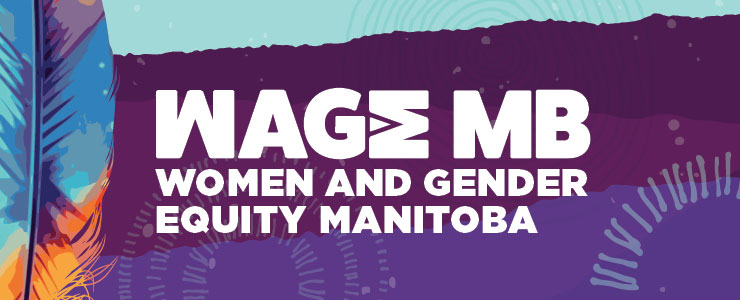
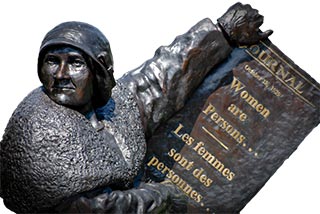
Person’s Day: Recognizing the role of Indigenous Women in Leadership
October 18th is Persons Day, a day which recognizes the 1929 court of appeals decision that first recognized select groups of Canadian women as “persons” under the law, and cleared the way for their increased participation in public and political participation across Canada. The day is generally associated with the Famous Five, a group of women activists including Emily Murphy, Nellie McClung, Louise McKinney, Irene Parlby and Henrietta Muir Edwards who launched the first legal challenge to the exclusively male definition of personhood in 1927.
The Famous Five have rightfully been recognized in Canadian history as pioneers of the feminist movement who confronted patriarchal ideals in order to advance gender equality. The work that these women did was significant in changing the course of gender equality in Canada, and deserves to be recognized as such.
It is also important to recognize that while these women chose to challenge some systems of power, they also actively worked to perpetuate others. They explicitly limited their calls for equality to a select type of woman who they deemed worthy, which largely did not include racialized, disabled, 2SLGBTQ+, Indigenous, or low income women. Though these beliefs reflect the time period that the Famous Five were living in, it does not mean we can ignore the fact that these beliefs influenced every aspect of their advocacy, and remain a part of their legacy. To ignore this reality does a disservice not only to our understanding of Canadian history, but also to the Famous Five themselves. By regarding these women purely as indisputable feminist heroes, we erase the fact that they were also human beings with their own shortcomings, prejudices, and need for continual learning and growth. The Famous Five were an important part of a feminist movement that has grown and evolved, and one which will continue to grow and evolve for generations to come. It is up to all of us to continue that process of growth, and uphold the best ideals of the Famous Five while expanding them is a way that continues to move us to true equality.
The Indigenous women highlighted below have done just that. They faced barriers not only because of their gender, but also because of their race, and in some cases their economic status. In response to systemic and social barriers, they demonstrated remarkable determination, courage, and tenacity in advocating for their rights, and worked to create a more equal Canada. Too often, Indigenous women’s stories have been overlooked or excluded from Canadian feminist histories, and this needs to be both recognized and addressed. These women were, and are, leaders both in their communities and on the national stage who continue to inspire generations of women. Their activism has contributed immensely to the movement for women’s legal and social equality that the Famous Five advocated so passionately for, and their stories deserve to be recognized as part of our history.
Indigenous Women as Architects of Change
Mary Two-Axe Earley
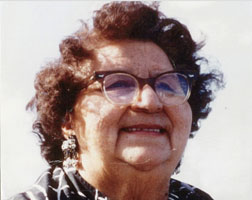
Mary Two-Axe Earley was a Kanien’kehá:ka (Mohawk) woman born in 1911 on the Kahnawà:ke reserve near Montreal. At the age of eighteen she moved to Brooklyn, New York in search of work where she met and married Edward Earley, and had two children with him. By marrying a non-Indigenous man, Two-Axe Earley lost her Indian Status under section 12(1)(b) of the Indian Act, meaning she lost her land and treaty rights and was unable to pass on her Indian Status to her children. Under the Indian Act, an Indigenous woman’s Indian status was completely tied to either her father or husband’s lineage, meaning she could easily lose status through marriage or divorce.
In 1966, one of Two-Axe Earley’s friends died in her arms of a heart attack after losing her home under the Indian Act, and Two-Axe Earley attributed her death to the stress she experienced as a result of the discriminatory policy. This prompted her to begin writing and speaking about the unique inequalities that Indigenous women experienced as a result of the Indian Act, and she went on to help found the Equal Rights for Indian Women Association. She also submitted a brief to the Royal Commission on the Status of Women in 1967 on gender discrimination in the Indian Act, despite opposition from a considerable number of male Indigenous leaders. In 1969, Two-Axe Earley returned to Kahnawà:ke after the death of her husband to live in a home that had been left to her by her late grandmother. However, due to no longer having Indian status she was only permitted to live in the home by formally gifting it to her daughter, who had gained status through marriage. She continued to advocate for Indigenous women’s rights by co-founding the Quebec Native Women’s Association, and speaking at a number of national and international events. In 1985, the Canadian Parliament passed Bill C-31, which was designed to address gender discrimination in the Indian Act, and allowed Indigenous women and their families who had lost their Indian status to regain it. Two-Axe Earley was the first woman to have her status formally reinstated. She received a number of honours and awards for her advocacy including the Governor General’s Persons Case Award, before her death in 1996.
Jeannette Corbiere Lavell
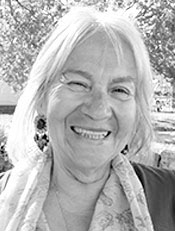
Photo: Women and Gender
Equality Canada
Jeannette Corbiere Lavell is an Anishinaabe woman who was born on the Wikwemikong Reserve on Manitoulin Island, Northern Ontario in 1942. She grew up on the reserve speaking both English and Ojibwe, and graduated from business college in North Bay before moving to Toronto. There she worked for the Native Canadian Centre of Toronto as a youth and social services worker, and later travelled the country with the Company of Young Canadians. In 1970, she married David Lavell and subsequently lost her Indian status under section 12(1)(b) of the Indian Act because he was not Indigenous. Outraged by the loss of her treaty and land rights, Corbiere Lavell filed a legal challenge against the federal government on the grounds that the Indian Act violated the Canadian Bill of Rights by discriminating against Indigenous women on the basis of sex.
Lavell’s challenge became merged with a similar one filed by Yvonne Bedard, and the two women faced opposition from Indigenous men who argued that their challenge to the Indian Act could potentially jeopardize Indigenous rights to self-determination. Corbiere Lavell’s case was dismissed as the judge argued that she was being afforded the same rights as other non-status women, and thus the Bill of Rights had not been violated. She successfully appealed the verdict, but it was later overturned by the Supreme Court of Canada, which stated that the Bill of Rights did not invalidate the Indian Act. Though Corbiere Lavell was ultimately unsuccessful in her legal challenge, she brought considerable attention to the issue of gender discrimination within the Indian Act, and laid the groundwork for future legal challenges. She continued to advocate for Indigenous women as a founding member of the Ontario Native Women’s Association, President of the Native Women’s Association of Canada, and through a number of other influential organizations. She became an educator and school principal, and received a number of awards for her advocacy including the Governor General’s Persons Award, the Queen Elizabeth II Diamond Jubilee Medal, and the Order of Canada.
Yvonne Bedard
Yvonne Bedard was a Haudenosaunee woman from Six Nations of the Grand River in Ontario where she was born in 1938. In 1964, she married a non-Indigenous man and lost her Indian status, as well as her land and treaty rights under section 12(1)(b) of the Indian Act. After separating from her husband in 1970, Bedard returned to Six Nations in 1970 to live in her late mother’s house with her two children. However, because she had lost her Indian status, the band council determined she had no right to own property on the reserve and gave her fourteen months to dispose of the property and leave the reserve. She transferred ownership of the property to her brother who allowed her to continue living there, but was later served an eviction notice by the band council, which she challenged on the grounds that the Indian Act was in violation of the Canadian Bill of Rights by discriminating on the basis of sex. She took her case to the Ontario Supreme Court which ruled in her favour, sparking criticism from Indigenous men and advocacy organizations which saw the ruling as infringing upon Indigenous rights to self determination. In 1973, her case merged with that of Jeannette Corbiere Lavell and appeared before the Supreme Court of Canada. Ultimately the court ruled against the two, but it served to draw attention to issues of gender discrimination against Indigenous women. Bedard was recognized for her activism at an event in Ottawa in 2018, before her death in 2021.
Sandra Lovelace Nicholas
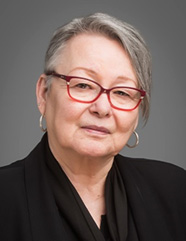
Photo: Senate of Canada
Sandra Lovelace Nicholas is a Wolastoqiyik (Maliseet) women who was born on Tobique First Nation Reserve in New Brunswick in 1948. She studied at St. Thomas University before moving to the United States to get a degree in residential construction and later became a carpenter. While there, she met and married Bennie Lovelace, a non-Indigenous American, which resulted in her losing her Indian status and subsequently her treaty and property rights. After her marriage ended, she returned to the Tobique Reserve with her son, but was ineligible for subsidized housing as she no longer held Indian Status. She ended up living in a tent on the reserve, and was denied healthcare and education for her children.
In 1977, she joined a group of Indigenous women who were fighting to eliminate gender discrimination from the Indian Act and the group occupied the Tobique band office for four months. In 1981, Lovelace Nicholas petitioned the United Nations Human Rights Committee, arguing that the discriminatory nature of the Indian Act violated international law. The United Nations ruled in her favour, and stated that Canada was in breach of the International Covenant on Civil and Political Rights. This ruling was seen as a victory by many Indigenous women, despite the fact that it had no power to change the Indian Act, which had continued to be upheld in the Lavell and Bedard cases. Lovelace Nicholas continued to advocate for the rights of Indigenous women and their children, and was instrumental in the passing of Bill C-31 in 1985. The amendment to the Indian Act allowed women and their children who had lost their Indian status to regain it, and was a major win in the fight to remove gender discrimination from the Indian Act. In 2005, she was appointed to the Canadian Senate, where she continued to advocate for Indigenous women through her support of the National Inquiry on Missing and Murdered Indigenous Women and Girls, and Bill S-3, which was designed to further eliminate gender discrimination in the Indian Act. She has received international recognition for her advocacy work, and has received the Governor General’s Persons Award, and the Order of Canada.
Edith Rodgers
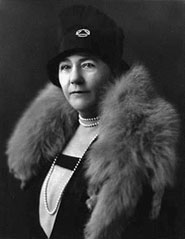
Photo: Manitoba
Historical Society
Edith Rodgers was a Metis politician born in 1876 at Norway House who grew up at Rupert House in The Pas, and was educated in Montreal. She moved to Winnipeg after graduation, and got married to a local businessman in 1898. She became a prominent philanthropist in the 1910s, and in 1914 became involved with organizations serving the families of soldiers fighting in the First World War. She worked for organizations like the Patriotic Fund, the Salvation Army, the Red Cross, and the Land Settlement Board, dedicating much of her time to meeting with families personally. In the provincial election of 1920, she ran as a Liberal Party candidate under the party leadership of Tobias Norris and became the MLA for the Winnipeg constituency.
During her time as an MLA she advocated for and helped pass Manitoba’s Child Welfare Act, and introduced legislation which incorporated The Winnipeg Foundation. She was re-elected in 1922 and 1927 despite the Liberal’s loss in both elections, and represented Canada at the 1928 Geneva Conference for the Abolition of Trade Prohibitions and Restrictions. She did not seek re-election in 1932, and went on to resume her philanthropic work as the Chair of the Provincial War Council of the Red Cross during the first half of World War Two before retiring in 1942.
Elder Levinia Brown
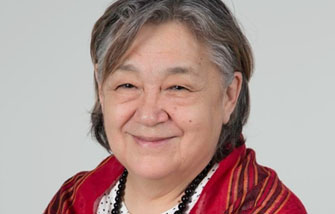
Photo: CBC News
Elder Levinia Brown is an Inuit woman born in 1947 at Dawson Inlet, Nunavut. After being educated in both Chesterfield Inlet and Manitoba, Brown became the first teaching aid in Rankin Inlet. She went on to work as a Certified Nursing Assistant in communities across Canada, and received a certification as a Northwest Territories Classroom Assistant. She served as the first chairperson of the Keewatin regional Education Authority, chairperson of the local housing authority, and Deputy Mayor.
In 1989, she became the first woman mayor of Rankin Inlet, and in 2004, she became an MLA for Rankin Inlet South/Whale Cove. She sat on the Executive Council, and was appointed Deputy Premier that same year. Throughout her time in politics she advocated for social reform as well as the economic and community empowerment of the territory. After she left the Legislative Assembly, she continued to advocate for lower food prices, employment, housing, elder care, and financial transparency. In 2020, she was appointed a member of the National Centre for Truth and Reconciliation's Governing Circle.
Sharon McIvor
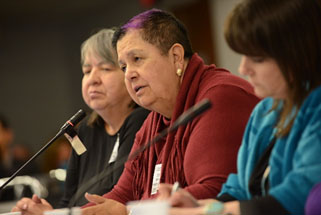
Photo: The Canadian Encyclopedia
Sharon McIvor is a Nlaka'pamux woman born in 1948 in Merritt, British Columbia, and a member of the Lower Nicola Indian Band. She studied at the University of Victoria and Queen’s University, where she received degrees in law. McIvor was among those women who regained Indian status with the passing of Bill C-31 in 1985. She regained status under section 6(1)(c), which allowed her to pass on status to her children, however her son regained status under section 6(2), which meant that he could not do the same. McIvor argued that this way in which women regained status was discriminatory, as a man with status would pass on section 6(1)(c) to his children rather than section 6(2). This meant her grandchildren would not have status while a man’s would. She issued a legal challenge against the federal government, arguing that the Indian Act was discriminatory on the basis of gender and violated her rights under the Canadian Charter of Rights and Freedoms.
McIvor’s case was not heard for seventeen years, but the British Columbia Supreme Court finally ruled in her favour in 2006. The federal government appealed the verdict unsuccessfully, and were ordered by the courts to amend the Act within a year. In 2011, Bill C-3 passed and was designed to address gender discrimination in status designation, however it did not address inequalities in status between great-grandchildren of men and women. McIvor and her son petitioned the United Nations Human Rights Committee in 2010 over gender discrimination in the Indian Act, and in 2019 the United Nations sided with them and encouraged the Canadian Government to address the inequality.
Mary Simon
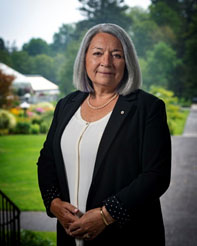
Photo: Governor General’s
Official Website
Mary Simon is an Inuk civil servant, diplomat, and advocate for the Arctic from Kangirsualujjuaq, Nunavik, Quebec. Raised by her mother and grandmother in the traditional Inuit way of life, after graduating high school she went on to teach Inuktitut at McGill University before becoming a broadcaster with CBC. Her work with the public service began when she was elected Secretary of the Northern Quebec Inuit Association Board of Directors, and she later joined the Makivik Corperation as Vice-President and then President. Her work with these groups involved advocating for the land rights of Inuit peoples, and negotiating land claims. She became involved in Canada’s national Inuit organization Inuit Tapiriit Kanatami, and was involved in negotiating the repatriation of the Canadian Constitution, and took part in discussions surrounding the Charlottetown Accord.
Simon went on to serve as co-director for the Royal Commission on Aboriginal Peoples, President and later Special Envoy for the Inuit Circumpolar Conference, Canadian Ambassador for Circumpolar Affairs, Canadian Ambassador to Denmark, and President of Inuit Tapiriit Kanatami. She helped establish the Arctic Council in 1996, and has worked with the Carter Centre in conflict resolution efforts around the world since 2001. In 2021, she was appointed by Queen Elizabeth II as the 30th Governor General of Canada., becoming the first Indigenous person to hold the position. She has received numerous awards and recognitions including the Queen Elizabeth II Golden and Diamond Jubillee medals, the National Aboriginal Achievement Award, Member and Officer of the Order of Canada, Officer of the National Order of Quebec, Extraordinary Companion of the Order of Canada and the Order of Military Merit, and a dozen honourary degrees.


